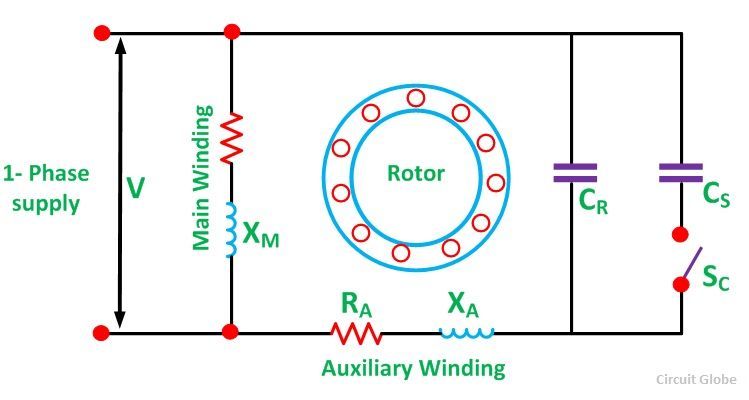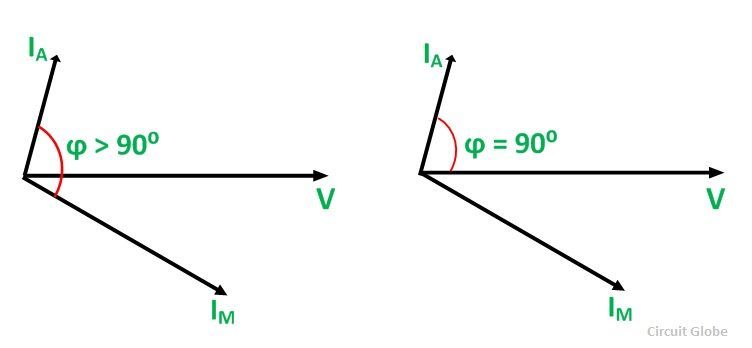The Capacitor Start Capacitor Run Motor has a cage rotor, and its stator has two windings known as Main and Auxiliary Windings. The two windings are displaced 90 degrees in space. There are two capacitors in this method one is used at the time of the starting and is known as starting capacitor. The other one is used for continuous running of the motor and is known as RUN capacitor.
So this motor is named Capacitor Start Capacitor Run Motor and is sometimes known as Two Value Capacitor Motor. The connection diagram of the Two valve Capacitor Motor is shown below:
 There are two capacitors in this motor represented by CS and CR. In the starting, the two capacitors are connected in parallel. The capacitor Cs is the Starting capacitor is short time rated. It is almost electrolytic. A large amount of current is required to obtain the starting torque. Therefore, the value of the capacitive reactance X should be low in the starting winding. Since, XA = 1/2πfCA, the value of the starting capacitor should be large.
There are two capacitors in this motor represented by CS and CR. In the starting, the two capacitors are connected in parallel. The capacitor Cs is the Starting capacitor is short time rated. It is almost electrolytic. A large amount of current is required to obtain the starting torque. Therefore, the value of the capacitive reactance X should be low in the starting winding. Since, XA = 1/2πfCA, the value of the starting capacitor should be large.
The rated line current is smaller than the starting current at the normal operating condition of the motor. Hence, the value of the capacitive reactance should be large. Since, XR = 1/2πfCR, the value of the run capacitor should be small.
As the motor reaches the synchronous speed, the starting capacitor Cs is disconnected from the circuit by a centrifugal switch Sc. The capacitor CR is connected permanently in the circuit and thus it is known as RUN Capacitor. The run capacitor is long time rated and is made of oil-filled paper.
The figure below shows the Phasor Diagram of the Capacitor Start Capacitor Run Motor.
Fig(a) shows the phasor diagram when at the starting both the capacitor are in the circuit and ϕ > 90⁰. Fig (b) shows the phasor when the starting capacitor is disconnected, and ϕ becomes equal to 90⁰.
The torque-speed characteristic of a two-value capacitor motor is shown below:
This type of motor is quiet and smooth running. They have higher efficiency than the motors that run on the main windings only. They are used for loads of higher inertia requiring frequent starts where the maximum pull-out torque and efficiency required are higher. The two value capacitor motors are used in pumping equipment, refrigeration, air compressors, etc.



very useful.very simplest way to understand. Thank you.
Nice explanation that I was able to follow without a problem. Would you take it a step further and show how to reverse the rotation of the motor? What kind of contractor would it take? And how would it be wired?
Thank you
can you tell me how to break this motor by using rheostatic breaking with circuit diagram
Nice explanation
really nice
what will happen if RUN capacitor failed?
very clear to the point